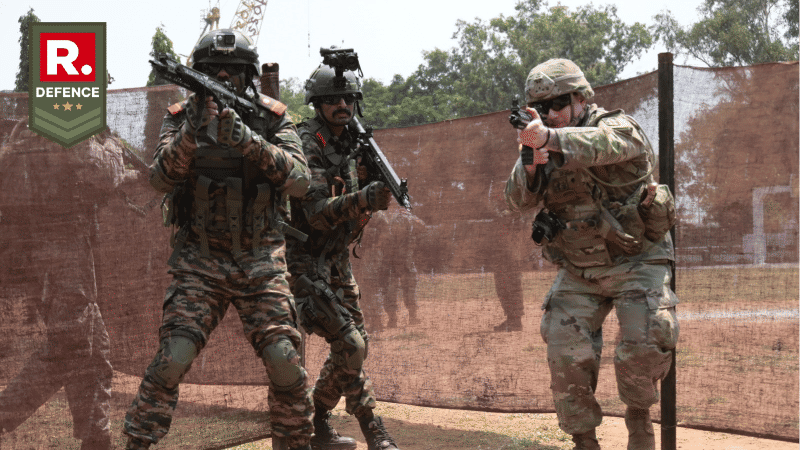Published 05:27 IST, January 11th 2025
India Declares 2025 as 'Year of Reforms' to Transform Armed Forces into a Future-Ready Powerhouse
Defence Minister Rajnath Singh announced 2025 as the 'Year of Reforms,' marking a transformative phase in India's defence strategy.

New Delhi, India - In a historic announcement on January 1, 2025, Defence Minister Rajnath Singh declared 2025 the 'Year of Reforms', setting the stage for a sweeping transformation of India's defence forces. This move hailed as a visionary step, aims to craft an agile, technologically advanced, and combat-ready military capable of executing integrated multi-domain operations. The Indian Army, in a statement, expressed its full alignment with the government’s roadmap, underscoring its commitment to becoming a Future Ready Army.
The 'Year of Reforms' follows the 'Year of Transformation' in 2023 and the 'Years of Technology Absorption' in 2024 and 2025. As part of a broader strategy, the Army has earmarked the period from 2023 to 2032 as the 'Decade of Transformation', highlighting the long-term vision required to achieve meaningful change. This latest initiative injects momentum and strategic clarity into the journey of modernisation.
Five Key Pillars of Reform
The reforms are structured around five transformative pillars, each addressing critical aspects of defence modernisation:
- Jointness and Integration - The cornerstone of the reform agenda is fostering seamless coordination between the Army, Navy, and Air Force. The development of Integrated Theatre Commands (ITCs) is a key focus, with initiatives like joint doctrines, shared operational tactics, and cross-service staffing. By involving the Central Armed Police Forces (CAPFs) and inter-ministerial postings, the reforms aim to enhance interoperability and create an ecosystem of synchronized capability development.
- Force Restructuring and Modernisation - Recognising the demands of 21st-century warfare, the Indian Army is investing in new-age domains such as cybersecurity, space, and artificial intelligence (AI). Indigenous solutions in AI, robotics, hypersonic technology, and machine learning are being prioritised. Specialised units will be created to operate in niche technological domains, and existing structures are being revamped to facilitate combined arms operations in multi-domain environments.
- Systems and Processes Overhaul - Legacy practices and organisational hierarchies are undergoing a thorough review to enhance operational efficiency. Steps such as delayering hierarchies, digitising processes, and implementing automated in-house solutions are being pursued. Procurement procedures are being streamlined to align with modern technology and reduce acquisition timelines, ensuring critical assets are delivered efficiently.
- Defence Diplomacy - India aims to leverage its defence capabilities on the global stage through bilateral and multilateral engagements, defence expos, and attache networks. These efforts are intended to showcase indigenous defence technologies and position India as a pivotal player in the global defence ecosystem.
- Human Resource Management - Recognising its personnel as its greatest asset, the Indian Army is focusing on policies that foster a motivated, inclusive, and resilient workforce. The Agnipath scheme, increased induction of women, and enhanced welfare measures for veterans are key highlights. These initiatives aim to blend tradition with modernity while cultivating a workforce aligned with the dynamic demands of modern warfare.
Reinforcing Operational Readiness
To complement these reforms, the Indian Army is also prioritising the seamless rollout of critical technologies to enhance its combat readiness. This includes streamlining acquisition pipelines, accelerating technological upgrades, and adopting indigenous solutions that cater to India's unique strategic needs.

The emphasis on emerging domains, such as cyber warfare, space, and electronic warfare, reflects a broader understanding of modern battlefields. Additionally, the Army’s efforts to incorporate sustainable solutions into its logistics and infrastructure development are aligned with India’s overarching vision for growth and innovation.
As the nation charts its course toward Viksit Bharat@2047, the Indian Army’s reform roadmap serves as a vital pillar of India’s strategic aspirations. These measures not only strengthen India’s defence but also bolster its position as a global leader in peace, stability, and technological innovation.
Updated 05:27 IST, January 11th 2025




